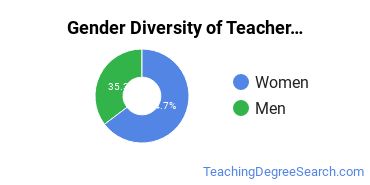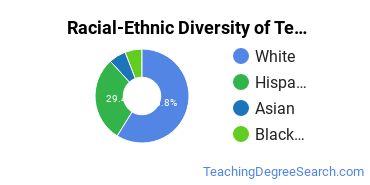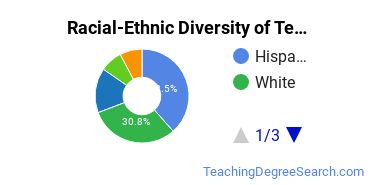Teacher Education Subject Specific at University of Arizona
University of Arizona is located in Tucson, Arizona and approximately 45,601 students attend the school each year.
Want to know more about the career opportunities in this field? Check out the Careers in Teacher Education Subject Specific section at the bottom of this page.
University of Arizona Teacher Education Subject Specific Degrees Available
- Bachelor’s Degree in Subject Specific Ed
- Master’s Degree in Subject Specific Ed
University of Arizona Teacher Education Subject Specific Rankings
The subject specific ed major at University of Arizona is not ranked on College Factual’s Best Colleges and Universities for Teacher Education Subject Specific. This could be for a number of reasons, such as not having enough data on the major or school to make an accurate assessment of its quality.
There were 11 students who received their doctoral degrees in subject specific ed, making the school the #11 most popular school in the United States for this category of students.
Subject Specific Ed Student Demographics at University of Arizona
Take a look at the following statistics related to the make-up of the subject specific ed majors at University of Arizona.
University of Arizona Teacher Education Subject Specific Bachelor’s Program

About 57% of those who receive a bachelor's degree in subject specific ed at University of Arizona are white. This is below average for this degree on the nationwide level. Prospective students may be interested in knowing that this school graduates 10% more racial-ethnic minorities in its subject specific ed bachelor's program than the national average.*
The following table and chart show the race/ethnicity for students who recently graduated from University of Arizona with a bachelor's in subject specific ed.

| Race/Ethnicity | Number of Students |
|---|---|
| Asian | 0 |
| Black or African American | 0 |
| Hispanic or Latino | 9 |
| White | 17 |
| International Students | 2 |
| Other Races/Ethnicities | 2 |
University of Arizona Teacher Education Subject Specific Master’s Program

Of the students who received a subject specific ed master's degree from University of Arizona, 59% were white. This is below average for this degree on the natiowide level. In the subject specific ed master's program at this school, racial-ethnic minorities make up 41% of degree recipients. That is 17% better than the national average.*
The following table and chart show the race/ethnicity for students who recently graduated from University of Arizona with a master's in subject specific ed.

| Race/Ethnicity | Number of Students |
|---|---|
| Asian | 1 |
| Black or African American | 0 |
| Hispanic or Latino | 5 |
| White | 10 |
| International Students | 0 |
| Other Races/Ethnicities | 1 |
Concentrations Within Teacher Education Subject Specific
The following subject specific ed concentations are available at University of Arizona. The table shows all degrees awarded in this field awarded for all degree levels at University of Arizona. A concentration may not be available for your level.
| Concentration | Annual Degrees Awarded |
|---|---|
| Reading Teacher Education | 14 |
| Art Education | 11 |
| Music Education | 9 |
| Agricultural Teacher Education | 7 |
| Modern Language Education | 1 |
| Health Education | 1 |
Related Majors
- Instructional Media Design
- Other Education
- Teaching English or French
- Educational Administration
- General Education
Careers That Subject Specific Ed Grads May Go Into
A degree in subject specific ed can lead to the following careers. Since job numbers and average salaries can vary by geographic location, we have only included the numbers for AZ, the home state for University of Arizona.
| Occupation | Jobs in AZ | Average Salary in AZ |
|---|---|---|
| Elementary School Teachers | 22,510 | $44,430 |
| High School Teachers | 17,200 | $48,610 |
| Middle School Teachers | 11,330 | $43,560 |
| Fitness Trainers and Aerobics Instructors | 5,810 | $40,990 |
| Coaches and Scouts | 5,470 | $49,600 |
References
*The racial-ethnic minorities count is calculated by taking the total number of students and subtracting white students, international students, and students whose race/ethnicity was unknown. This number is then divided by the total number of students at the school to obtain the racial-ethnic minorities percentage.
- College Factual
- National Center for Education Statistics
- O*NET Online
- Image Credit: By Msr69er under License
More about our data sources and methodologies.
